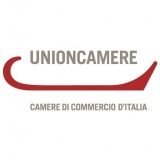
In Padua in the late Medieval period the presence of the Basilica of S. Antonio stimulated the development of a school of artisan silversmiths of unparalleled skill, capable of producing masterpieces such as the reliquary that contains Saint Anthony’s chin: a splendid specimen made from molten silver that has been embossed, chased, perforated and gilded.
Two driving forces of the Venetian Baroque silversmith culture emerged with the flourishing of the Baroque style In the eighteenth century: Angelo Scarabello and Sante Benato. In the nineteenth century the art of silversmithery adopted the neo-classical style and subsequently specialised in more eclectic tastes.
From the 1950s onwards many companies moved towards production at an industrial level, without losing the traditional touch of the products and their artisanal attention to detail. During the years of the economic boom, silversmith production in Padua underwent a period of considerable development, which is still taking its course today.
As early as the fourteenth century, the master silversmiths of Padua adopted characteristic operating methods. They used to layer small figures and ornate elements in series, which they would arrange rhythmically on the outer surfaces of the object. In fact, in that era they did not usually emboss the decorations directly onto the supporting sheet since they preferred applied motifs to openwork.
In the fifteenth century the technique changed from translucent enamel to niello. During the same period the masters based in Padua introduced techniques using a chisel and repoussage.
Padua, and the central zone of its province in particular, is the traditional centre of silversmith craftsmen in the area. 45% of the national production of silver is concentrated within the triangle formed by Padua, Vicenza and Treviso.
Camera di Commercio di Padova



